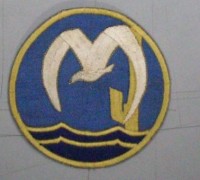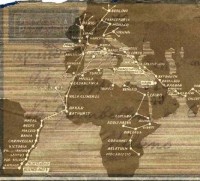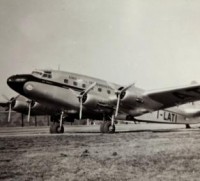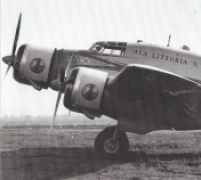L.A.T.I. ITALIAN AIRLINES IN BRAZIL * - L.A.T.I. * ITALIAN AIRLINES
4)THE L.A.T.I. ISSUE
Axis-controlled aviation at the beginning of 1941 had centered in Brazil, from which it radiated southward and westward to the Pacific coast. The German CONDOR line, serving the Brazilian coast and the interior of southern South America, was old and well-established. Transatlantic flying in 1941 was limited to a weekly service provided by the Italian LATI line, which operated from Europe via the Cape Verdes to Natal and Rio de Janeiro-a service patronized largely by Axis agents. From Natal southward along the Brazilian coast, LATI and the Vichy-dominated Air France
Company controlled airfield facilities that menaced American hemisphere defense projects in Brazil and posed an acute menace to British shipping and the maintenance of the British patrol against Axis shipping in the South Atlantic. In the spring of 1941 both CONDOR and LATI were under strong suspicion of performing more or less regular reconnaissance off the coast to spot British naval vessels and guide Axis ships through the British blockade. LATI's suddenly increased activity on the transatlantic route in June and July coincided with a heightened German submarine campaign against British shipping in the southern Atlantic and there was good reason to believe that Axis submarines were being guided by LATI's planes.
During the last week of June 1941, six Axis merchant vessels carrying strategic war materials left Brazil to run the British blockade, again coincident with LATI's increased amount of flying across the ocean. The United States Army believed that this direct menace to the British war effort must be stopped. To deal with this situation, the United States put CONDOR and LATI on its 17 July 1941 blacklist of Latin American firms with which American companies were forbidden to trade. Since the Germans had a supply of new planes and spare parts, which had been run through the British blockade in the spring of 1941, this move had little immediate effect.
At the urging of the United States the Brazilian Government in October began to move toward taking over CONDOR and LATI, but it was reluctant to suspend their operations until the United States was prepared to furnish substitute services. When the Army's Ferrying Command operations by way of the South Atlantic were inaugurated in November, the continued operation by hostile airlines of airport ground facilities, including radio transmitters and meteorological services, became intolerable. With Brazilian cooperation, both LATI and CONDOR were forced out of business in December 1941.
The Ferrying Command agreed in January 1942 to purchase the seven LATI planes as soon as the Brazilian Government requisitioned them. Brazilian interests with government backing reorganized CONDOR, and the new company was permitted to resume operations in April. At the end of 1942 German and Italian equipment was still in use on a number of local airlines in southern South America, but all vestiges of Axis control had disappeared.
In retrospect, while the de-Germanization program had been slow in getting under way, it had achieved the desired results by the time that the United States openly entered the war. Axis aviation had been virtually eliminated and supplanted by American or locally owned services.
While the small number (about forty) and obsolete character of the German transport planes and their comparatively rudimentary ground facilities had never constituted a really serious menace, indirectly German aviation interests had been able to exert an influence out of all proportion to their size in planes and personnel through propaganda and the maintenance of communications with axis diplomats and agents. Conceivably, too, the extensive German control of airfield installations could have been used to facilitate a German air invasion.
In 1941 Axis-dominated commercial aviation was one of Germany's strongest weapons in Latin America to combat American hemisphere defense plans and measures, and its elimination marked a huge forward stride in safeguarding the hemisphere against possible Axis attack.
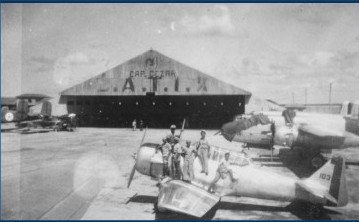
The picture shows the L.A.T.I. hangar at Parnamirim Field. In front two Brazilian Air Force Airplanes; one B-25 and a North American T-6 with its crew
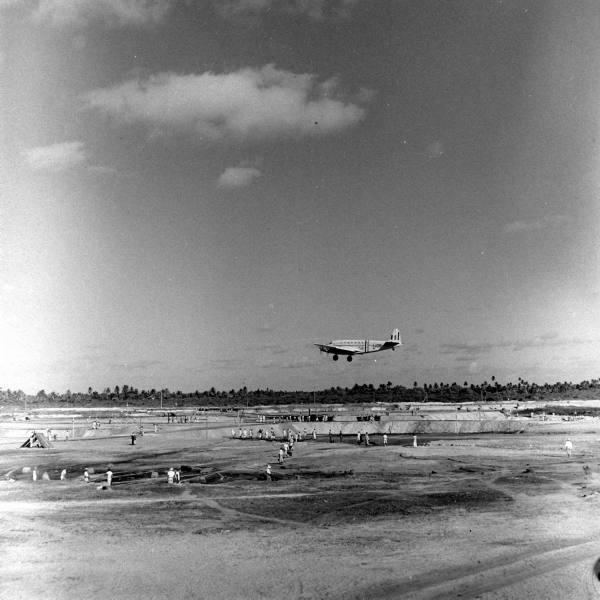
A rare picture shows one Savoia Marchetti prior to land at the still makeshift airport at Natal.
